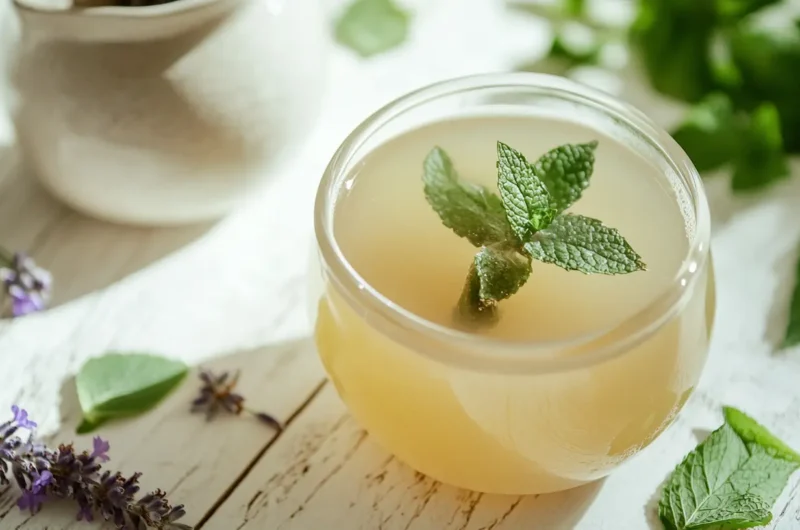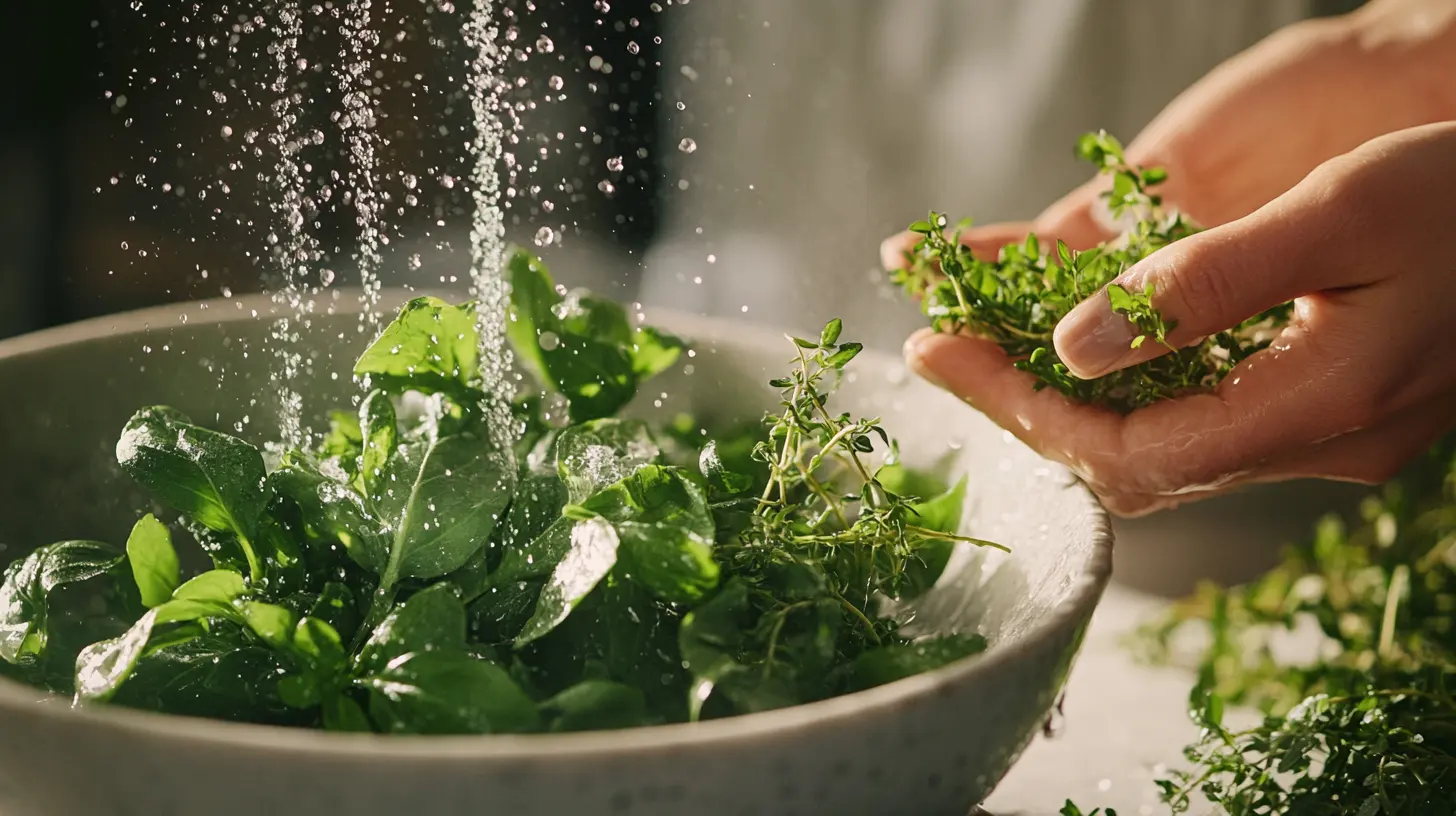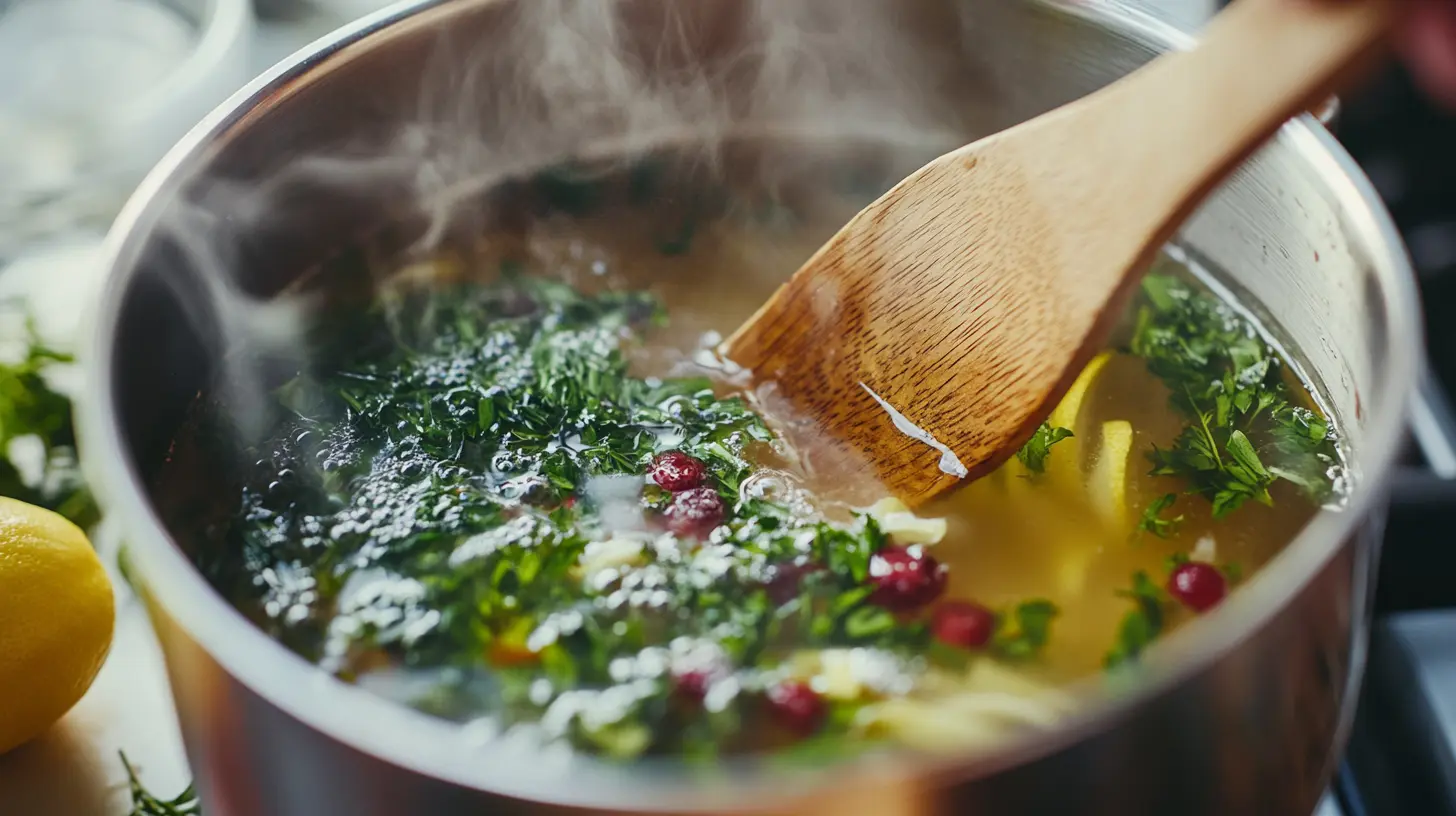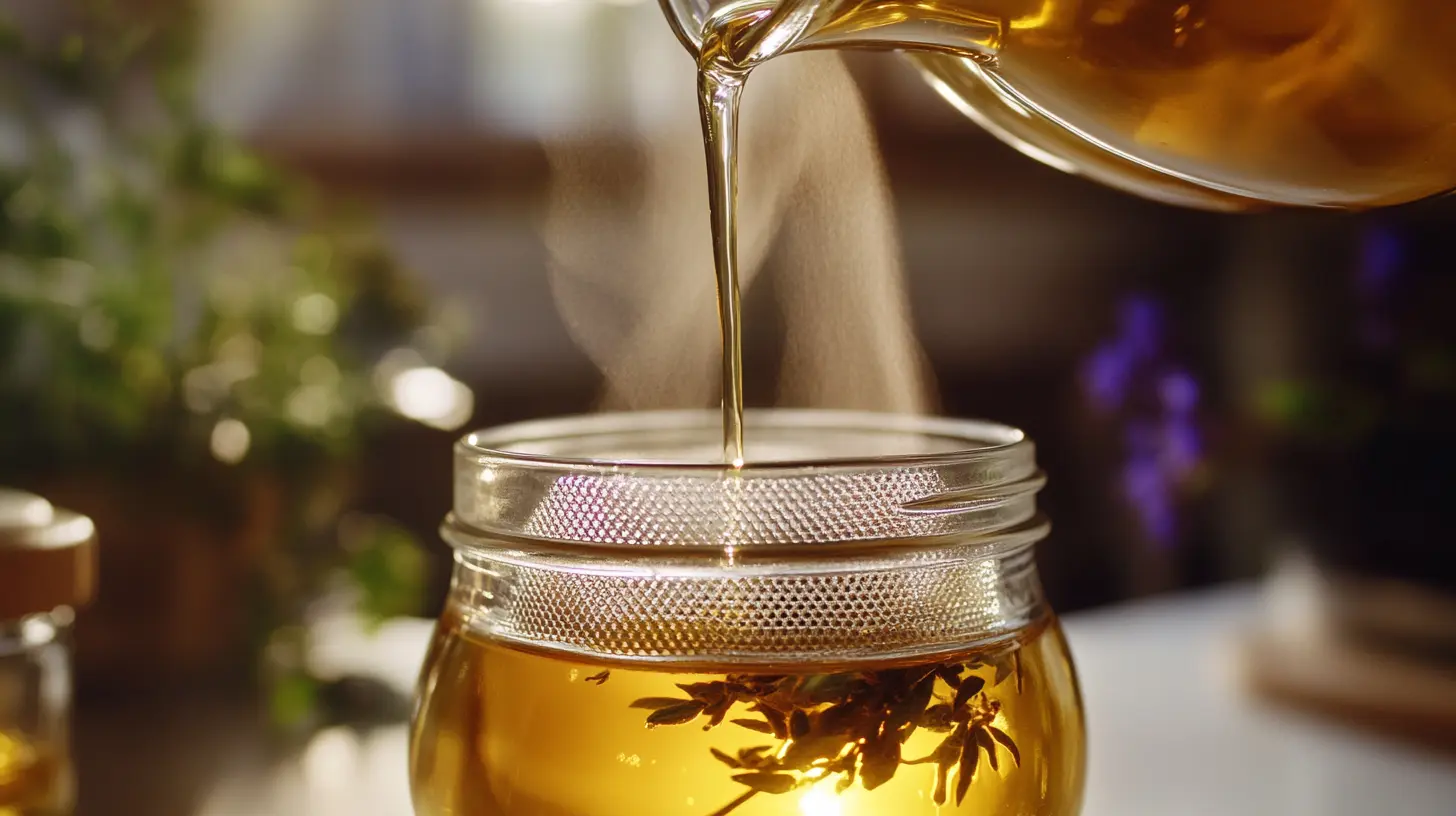There’s something incredibly satisfying about capturing the essence of fresh herbs in a bottle. Herbal Cordials Recipe are a simple yet elegant way to enjoy nature’s bounty, offering both refreshment and a touch of tradition. Whether sipped over ice on a hot summer day, mixed into sparkling water for a refreshing spritz, or used as a sophisticated cocktail ingredient, these concentrated syrups bring flavor and wellness together in one delicious sip.
What Is a Herbal Cordial?
A herbal cordial is a sweet, aromatic syrup made by infusing fresh herbs in a simple mixture of sugar and water. The result is a flavorful concentrate that can be diluted with still or sparkling water, blended into cocktails, or even drizzled over desserts. Unlike artificially flavored syrups, homemade Herbal Cordials Recipe allow you to experiment with seasonal herbs, creating vibrant and unique flavors straight from your garden or local market.
Herbal Cordials Recipe have deep roots in European history, particularly in England and France, where they were originally crafted for both pleasure and medicinal purposes. In medieval times, herbal infusions were valued for their healing properties, often used to aid digestion or boost immunity. Over time, these elixirs evolved into the refreshing cordials we enjoy today, blending old-world wisdom with modern-day enjoyment.
Homemade Herbal Cordial Recipe
Course: Beverages, LunchCuisine: EuropeanDifficulty: Easy10-12 servings (approx. 2-3 tablespoons per serving)
servings5
minutes10
minutes50-70 kcal (depending on sugar content and dilution)
kcalHerbal cordials are a refreshing and aromatic way to enjoy the flavors of fresh herbs. This simple syrup-like infusion is perfect for mixing with water, sparkling beverages, or cocktails.
Ingredients
Essential Ingredients:
2 cups fresh herbs (e.g., mint, basil, lemon balm, rosemary, thyme, or lavender)
2 cups water
1 cup sugar (adjust to taste)
1 lemon (zested and juiced)
Optional Ingredients:
1-2 tablespoons honey (or maple syrup for a natural sweetener alternative)
1-2 drops food-grade essential oil (e.g., lavender, peppermint) for enhanced herbal aroma
½ cup mixed berries (for a fruity twist)
1-2 slices fresh ginger (for added warmth and spice)
Directions
- Prepare the Herbs
Rinse the fresh herbs thoroughly under cold water to remove any dirt or debris.
Gently bruise or crush the herbs using your hands or a mortar and pestle to release their essential oils.
- Make the Infusion
In a medium saucepan, combine 2 cups of water and 1 cup of sugar (or chosen sweetener).
Bring the mixture to a simmer over medium heat, stirring occasionally until the sugar dissolves completely.
Add the fresh herbs, lemon zest, and any optional ingredients (such as berries, ginger, or essential oils).
- Steep the Herbs
Remove the saucepan from heat and cover with a lid.
Allow the mixture to steep for 10-15 minutes (steeping too long may result in bitterness).
Stir in the lemon juice after steeping for added brightness. - Strain and Store
Strain the cordial through a fine-mesh sieve or cheesecloth into a clean glass jar or bottle, discarding the solids.
Let the cordial cool to room temperature before sealing.
- Store and Serve
Refrigerate the cordial in a sterilized glass bottle for up to 2 weeks.
For longer storage, freeze in ice cube trays for easy portioning. - How to Use Herbal Cordial
Classic Refreshing Drink: Mix 2-3 tablespoons of cordial with 8 ounces of water or sparkling water over ice.
Cocktails and Mocktails: Add a splash to your favorite cocktail recipes for a herbal twist.
Desserts and Drizzles: Drizzle over fresh fruit, yogurt, or ice cream for a natural sweetener.
Tea Enhancer: Stir into hot or iced tea for an herbal boost.
Table of Contents
Why This Recipe?
One of the greatest appeals of making Herbal Cordials Recipe at home is their sheer adaptability. You can create a cordial with almost any herb—mint for a cooling touch, lavender for a floral note, or lemon balm for a citrusy zing. This recipe is also incredibly simple, requiring just a handful of ingredients and minimal effort. Plus, it’s a great way to preserve the fleeting flavors of fresh herbs before they fade with the seasons.
For me, making Herbal Cordials Recipe is more than just a culinary endeavor—it’s a nostalgic ritual. I vividly remember my grandmother’s kitchen, where fresh herbs from her garden would be steeped into the most fragrant syrups. A glass of chilled herbal cordial on a warm evening was her way of unwinding, and now, every time I make a batch, I feel that same comforting connection to the past.
Tips & Variations: Elevate Your Herbal Cordial Experience
One of the best things about homemade Herbal Cordials Recipe is their incredible flexibility. Whether you want to experiment with different flavors, make dietary adjustments, or present them beautifully for a special occasion, there are countless ways to customize your cordial.
Flavor Variations: Infuse More Depth & Complexity
Herbal Cordials Recipe provide the perfect canvas for creativity. Try these delicious variations to add complexity to your syrup:

- Citrus Zing – Add fresh slices of lemon, lime, or orange while simmering for a bright, refreshing twist.
- Spiced Kick – A few slices of fresh ginger or a cinnamon stick can add warmth and depth.
- Floral Elegance – Lavender, chamomile, or rose petals introduce a delicate, aromatic quality.
- Fruity Burst – Enhance your cordial with crushed berries, such as raspberries, strawberries, or blackberries, for a naturally sweet and colorful infusion.
- Herbal Combinations – Blend different herbs like mint with basil or rosemary with thyme to create unique layers of flavor.
Dietary Adjustments: Make It Work for You
If you have dietary restrictions, don’t worry—Herbal Cordials Recipe can be easily adapted:

- Sugar-Free Option – Replace sugar with natural sweeteners like stevia, monk fruit, or erythritol. Adjust to taste, as these substitutes can be more or less sweet than traditional sugar.
- Citrus-Free Alternative – If you need to avoid citrus, use a splash of apple cider vinegar or white wine vinegar to maintain the necessary acidity and balance the flavors.
- Herb Flexibility – Don’t have fresh herbs on hand? Use dried herbs instead! Just reduce the amount, as dried herbs have a more concentrated flavor.
Presentation Ideas: Serving with Style
A beautifully presented herbal cordial makes the experience even more enjoyable. Here’s how to serve it with flair:

- Elegant Glass Pitcher – Pour your chilled cordial into a glass pitcher filled with ice and fresh herb sprigs for a visually appealing and refreshing drink.
- Garnish Creatively – Add edible flowers, citrus slices, or even a sugared rim on the glass for a decorative touch.
- Perfect for Gifting – Bottle your homemade cordial in decorative glass jars or swing-top bottles, add a handwritten label, and tie it with a ribbon for a thoughtful homemade gift.
Endless Possibilities Await
By experimenting with different herbs, flavors, and presentation styles, you can create a cordial that perfectly suits your taste. Whether you keep it classic or get adventurous, this simple recipe is a gateway to a world of refreshing, aromatic delights!
Common Mistakes & How to Fix Them
Even with a simple recipe like herbal cordial, small missteps can affect the final result. If your cordial isn’t quite right, don’t worry—here are some common issues and easy fixes to ensure you get a perfectly balanced, flavorful syrup every time.
Problem: The Cordial Is Too Sweet
Solution: If your cordial tastes overwhelmingly sweet, you can adjust it in a couple of ways:
- Reduce the amount of sugar in your next batch to better suit your taste.
- Dilute the cordial with more water or a splash of lemon juice to balance the sweetness.
- Add an extra pinch of acidity (like apple cider vinegar) to cut through the sugar.
Problem: The Flavor Is Too Mild
Solution: If your cordial lacks a strong herbal flavor, you may need to adjust your infusion method:
- Use more herbs—sometimes a little extra can make all the difference.
- Allow the herbs to steep longer before straining to extract more flavor.
- Lightly bruise or crush the herbs before steeping to help release their natural oils.
Problem: The Cordial Is Cloudy
Solution: A cloudy cordial isn’t harmful, but if you prefer a clear syrup, try these tips:
- Strain the liquid using a sieve with a fine mesh, lined with cheesecloth. If cheesecloth is not available, a coffee filter can be used as an alternative.
- Let the cordial sit undisturbed for a few hours, then carefully pour off the clear liquid, leaving any sediment behind.
Problem: The Cordial Spoils Quickly
Solution: Proper storage is key to keeping your cordial fresh for longer:
- Always store your cordial in sterilized glass bottles or jars to prevent bacterial growth.
- Refrigerate promptly and consume within 2–3 weeks.
- For longer storage, consider freezing small portions in ice cube trays and defrosting as needed.
Problem: The Herbs Taste Bitter
Solution: Bitterness can occur if the herbs are over-extracted or if woody stems are used:
- Avoid steeping the herbs for too long—10–15 minutes is usually enough.
- Remove any tough stems and only use the leaves and delicate parts of the herb.
- If bitterness persists, balance it with a little extra sweetness or acidity.
Perfecting Your Herbal Cordial
Every batch of cordial is a learning experience. By tweaking ingredients, steeping times, and storage methods, you’ll soon develop a foolproof recipe that delivers the perfect balance of flavor, sweetness, and clarity every time!

Nutritional Information: A Closer Look at Herbal Cordials Recipe
While Herbal Cordials Recipe are primarily enjoyed for their refreshing taste and aromatic flavors, they also offer some nutritional value depending on the ingredients used. Here’s a breakdown of what you can expect from a typical serving and how you can make it a healthier choice.
Caloric Breakdown (Per Serving, ~2-3 tbsp of cordial diluted in water)
| Nutrient | Amount (Approx.) |
|---|---|
| Calories | 50-70 kcal |
| Fat | 0g |
| Carbohydrates | 12-15g |
| Protein | 0g |
| Sugar | 12-15g (from sugar and natural ingredients) |
The calorie count of Herbal Cordials Recipe mainly depends on the amount of sugar used in the recipe. Dilution with water or sparkling water significantly reduces the calorie intake per serving.
Health Benefits of Herbal Cordials Recipe
Beyond their delicious taste, Herbal Cordials Recipe can provide mild health benefits, especially when made with fresh, nutrient-rich ingredients:
- Digestive Support: Herbs like mint, lemon balm, and ginger have been used for centuries to aid digestion and soothe bloating.
- Immune Boosting: If your cordial includes citrus (like lemon or orange), you’re getting a dose of vitamin C and antioxidants, which help support the immune system.
- Natural Antimicrobial Properties: Using honey instead of sugar can add antibacterial benefits, making your cordial a soothing choice for sore throats.
- Stress Relief: Herbs like chamomile and lavender have calming properties that can help promote relaxation.
Healthier Alternatives & Modifications
If you’re looking for ways to make your herbal cordial even healthier, consider these simple swaps:
- Reduce Sugar: Decrease the sugar content or use a natural sweetener like honey, maple syrup, or coconut sugar for a lower glycemic impact.
- Sugar-Free Options: Opt for monk fruit sweetener, stevia, or erythritol to cut down on sugar while maintaining sweetness.
- Use Organic Ingredients: Fresh, organic herbs and fruits are free from pesticides and have higher nutrient levels, making them a better choice for both flavor and health.
- Experiment with Infusions: Incorporate nutrient-rich ingredients like hibiscus (rich in vitamin C) or turmeric (anti-inflammatory benefits) to add both flavor and health benefits.
Balancing Taste & Nutrition
While Herbal Cordials Recipe are traditionally sweetened, you have full control over the ingredients when making them at home. By adjusting the recipe to suit your dietary preferences, you can enjoy a naturally flavorful, refreshing drink that’s both satisfying and nourishing.
FAQs About Herbal Cordials Recipe
Can I use dried herbs instead of fresh?
Absolutely! While fresh herbs provide a vibrant, delicate flavor, dried herbs are more concentrated, so you’ll need to adjust the quantity. As a general rule, use half the amount of dried herbs compared to fresh ones. If the recipe calls for 1 cup of fresh herbs, use about ½ cup of dried herbs.
How long does herbal cordial last?
When stored properly in a sterilized glass bottle and refrigerated, herbal cordial can last up to 2 weeks. For longer shelf life, ensure that all utensils and containers are clean before use, and always store the cordial in the fridge. If you notice any off smells, cloudiness, or mold, discard it immediately.
Can I freeze the cordial for later use?
Yes! Freezing herbal cordial is a great way to extend its shelf life and have small, ready-to-use portions. Simply pour the cordial into an ice cube tray, freeze until solid, and transfer the cubes to a sealed container or freezer bag. This makes it easy to pop out a cube and mix with water or sparkling water whenever you need a refreshing drink.
What can I use instead of sugar?
If you’re looking for a natural or lower-glycemic alternative to white sugar, several options can enhance flavor while offering different health benefits. Honey adds a floral depth and contains antimicrobial properties, making it a great natural sweetener. Maple syrup provides a mild caramel-like sweetness and is rich in minerals. Coconut sugar is a less refined option with a subtle molasses flavor and a lower glycemic index. For sugar-free alternatives, stevia, monk fruit, or erythritol are excellent choices, though they can be much sweeter than sugar, so adjustments may be needed to balance the taste.
Can I mix different herbs together?
Absolutely! Herbal Cordials Recipe are highly customizable. Experiment with flavor combinations like mint and basil, lavender and lemon balm, or rosemary and thyme for a unique and refreshing blend.
With these FAQs in mind, you’re now ready to master the art of Herbal Cordials Recipe, whether you’re keeping it simple or getting creative with new flavors!
Conclusion: Sip, Savor, and Get Creative with Herbal Cordials Recipe
Herbal Cordials Recipe are a delightful way to enjoy the fresh flavors of nature in a simple, versatile, and refreshing drink. Whether you prefer a cooling mint-infused cordial, a citrusy burst of lemon balm, or a floral hint of lavender, this recipe allows you to experiment with seasonal ingredients and tailor it to your taste. Plus, with easy variations and storage options, you can enjoy your homemade cordial all year round!
Now It’s Your Turn!
I’d love to hear how your herbal cordial turned out! Try the recipe, get creative with your favorite herb combinations, and share your results. Did you add a unique twist? Discover a new favorite blend? Let me know in the comments!
If you enjoyed this recipe, check out more refreshing homemade drinks like herbal teas, infused waters, and botanical syrups to expand your collection of natural beverages. Follow me on [Facebook] for more herbal recipes, tips, and creative ideas!
However you choose to enjoy your herbal cordial, one thing is certain—it’s a delicious, nourishing way to savor the beauty of fresh herbs. Cheers to homemade goodness!





